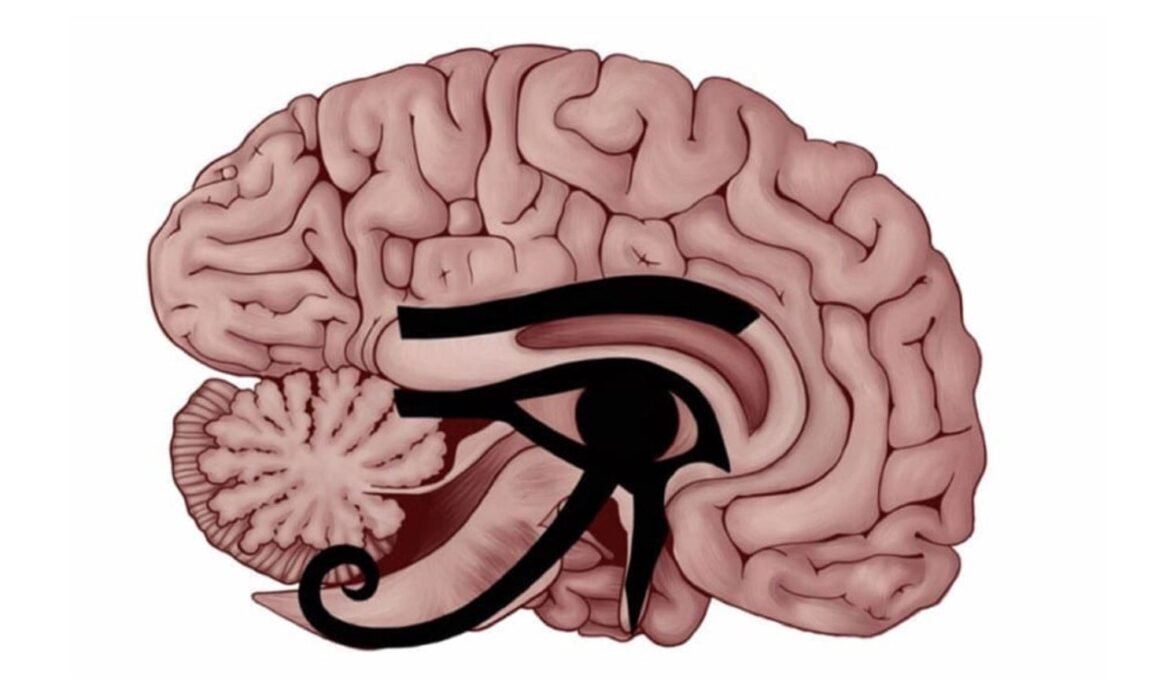The Eye of Horus stands as a remarkable symbol that transcends its origins in ancient Egyptian mythology, revealing a profound connection to human brain anatomy that continues to fascinate scholars and researchers today. This enigmatic symbol, deeply rooted in one of the world’s most advanced ancient civilizations, offers a remarkable glimpse into the sophisticated understanding of human sensory perception and neurological function.
The Mythological Origins of the Eye of Horus
In ancient Egyptian mythology, the Eye of Horus emerged from a powerful narrative of healing and protection. According to legend, the god Horus lost his eye during a fierce battle with Seth, symbolizing the ongoing struggle between order and chaos. The eye was later restored, becoming a powerful symbol of wholeness, healing, and divine protection. This mythological background sets the stage for the symbol’s deeper significance beyond mere artistic representation.
A Surprising Anatomical Map of the Human Brain
Perhaps most intriguingly, modern researchers have discovered that the Eye of Horus bears an uncanny resemblance to a cross-section of the human brain. Each segment of the symbol appears to correspond precisely to different sensory centers and critical brain regions:
- The Lateral Part: Correlates with the olfactory trigone, representing the sense of smell
- Central Section: Matches the interthalamic adhesion and corpus callosum
- Lower Portion: Aligns with Brodman areas responsible for auditory processing
This remarkable correlation suggests that ancient Egyptians possessed an extraordinary understanding of human neuroanatomy, far more advanced than previously believed. The precision with which the Eye of Horus maps to brain structures continues to challenge conventional historical perspectives on medical knowledge.
The Limbic System and Emotional Consciousness
Beyond its structural similarities, the Eye of Horus profoundly represents emotional regulation and consciousness. The symbol’s design closely mirrors the limbic system, the brain’s emotional processing center responsible for memory, learning, and emotional responses. This connection transcends mere coincidence, pointing to a sophisticated understanding of human emotional intelligence that was centuries ahead of its time.
The Third Eye and Spiritual Significance
The symbol’s relationship with the pineal gland introduces another layer of complexity. Often referred to as the “Third Eye” in various spiritual traditions, the pineal gland has long been associated with heightened consciousness and spiritual awareness. The Eye of Horus seems to acknowledge this connection, bridging scientific anatomy with metaphysical understanding.
Modern Scientific Perspectives
Contemporary neuroscience increasingly validates the ancient observations embedded in the Eye of Horus. Recent studies have confirmed remarkable alignments between the symbol’s structure and neurological pathways, suggesting that ancient Egyptians possessed knowledge that was remarkably precise and intuitive.
Cultural and Scientific Implications
The Eye of Horus represents more than a historical artifact or mythological symbol. It stands as a testament to human curiosity, demonstrating how ancient civilizations approached understanding complex biological systems through observation, symbolism, and innovative thinking. This symbol challenges our perceptions of historical scientific knowledge and invites us to reimagine the intellectual capabilities of our ancestors.
Conclusion
The Eye of Horus continues to captivate researchers, bridging art, mythology, neuroscience, and spirituality. Its intricate design serves as a powerful reminder that knowledge is often hidden in plain sight, waiting to be understood through interdisciplinary exploration and open-minded inquiry.
As we continue to unravel the mysteries of human consciousness and brain function, the Eye of Horus remains a profound symbol of our eternal quest to understand ourselves and our place in the universe.






